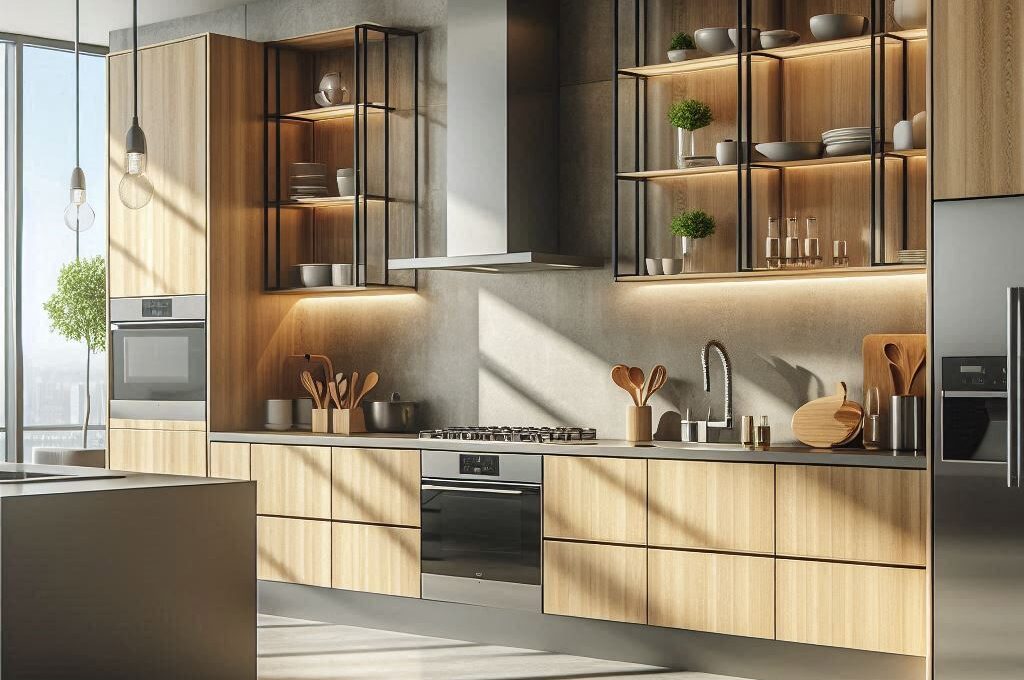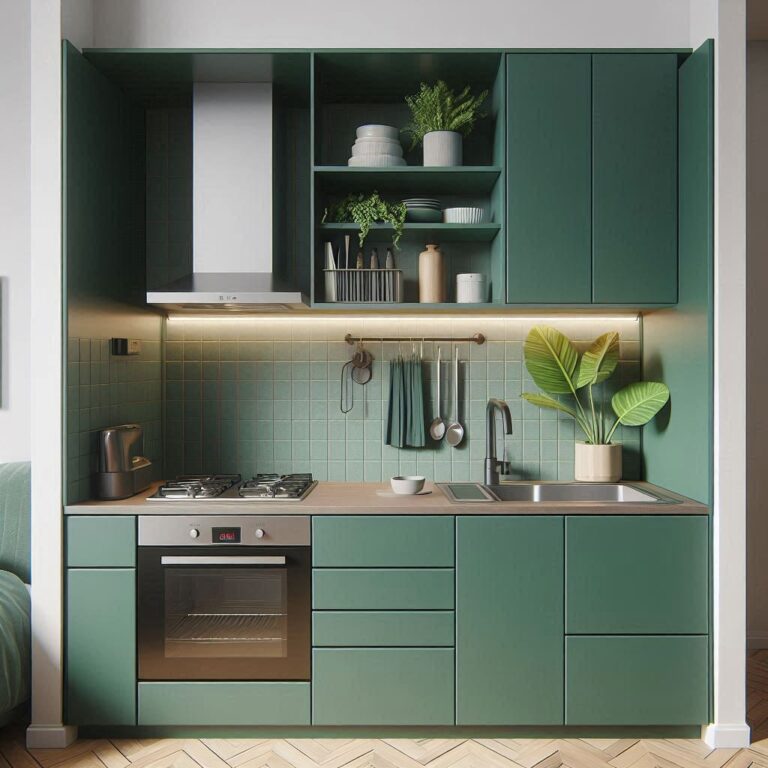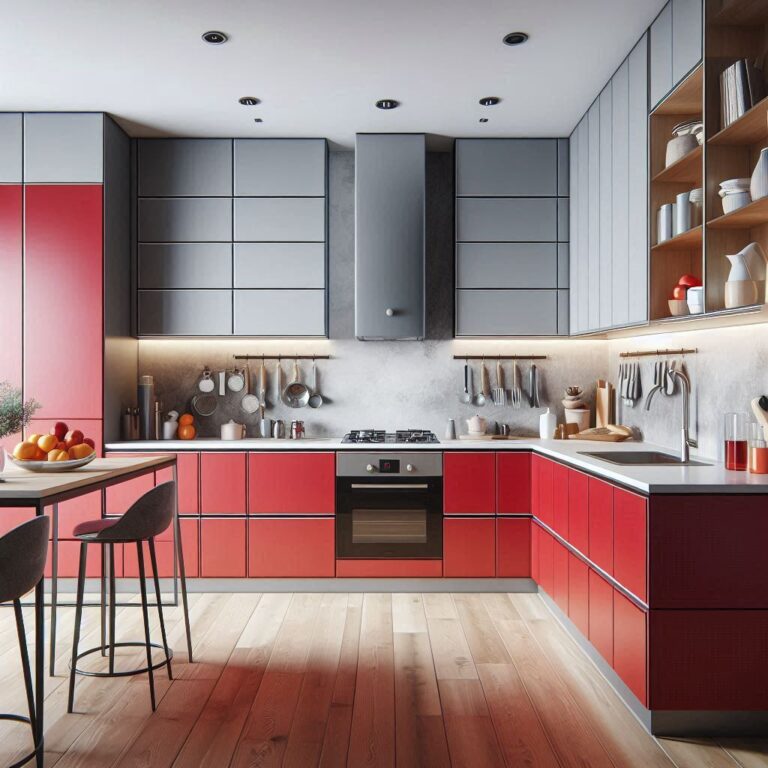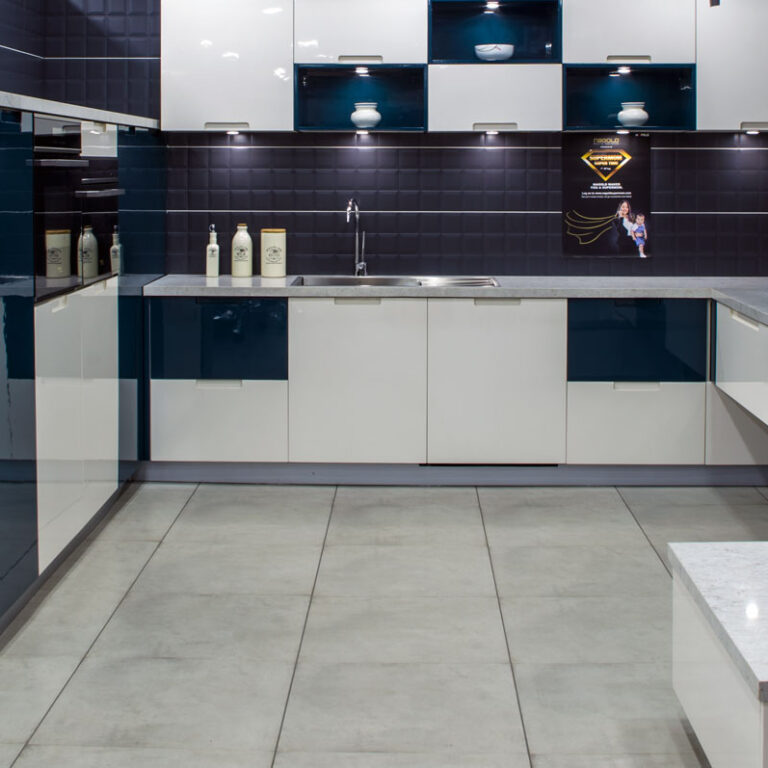How to Design Your Dream Modular Kitchen
Designing a modular kitchen is an exciting venture that combines functionality, style, and personal taste. A well-planned kitchen can significantly enhance your cooking experience and add value to your home. Here’s a comprehensive guide to help you design your dream modular kitchen.
1. Assess Your Needs and Lifestyle
Before diving into design specifics, it’s crucial to understand your cooking habits, storage requirements, and lifestyle. Start by asking yourself the following questions:
Cooking Frequency : How often do you cook? Daily cooks might need more durable surfaces and ample storage, while occasional chefs may prioritize aesthetics.
Meal Types : What types of meals do you prepare? Baking enthusiasts might require more counter space, while those who frequently cook elaborate meals might benefit from specialized storage for spices and utensils.
Kitchen Users : How many people typically use the kitchen at once? Families might need a more spacious layout, whereas a single person or couple might prefer a compact design.
Storage Needs : What are your storage needs for appliances, cookware, and food items? Consider both your current requirements and any future purchases you might make.
Understanding these factors will help you prioritize features and layouts that suit your daily activities.
2. Choose the Right Layout
The layout is the backbone of your kitchen design. Depending on your space and preferences, consider these common modular kitchen layouts:
L-Shaped Kitchen : Ideal for open spaces, providing ample counter space and flexibility. This layout allows for efficient work zones and is great for small to medium-sized kitchens.
U-Shaped Kitchen : Offers maximum storage and counter space, perfect for larger kitchens. It creates a spacious and efficient work area with counters on three sides.
Straight Line Kitchen : Best for small spaces, focusing on efficiency and simplicity. Everything is within easy reach, making it ideal for apartments and smaller homes.
Parallel Kitchen : Two parallel counters provide excellent workflow, suitable for medium-sized kitchens. This layout is great for optimizing space and separating cooking and cleaning areas.
Island Kitchen : Adds extra counter space and serves as a focal point for socializing and meal prep. An island can include additional storage, a sink, or a cooktop.
3. Focus on the Work Triangle
The work triangle concept involves positioning the sink, stove, and refrigerator in a triangular layout to ensure efficiency. This minimizes unnecessary movement and makes cooking more comfortable. Aim for a distance of 4-9 feet between each point to create an optimal workflow. Consider the following tips:
Placement : Place the sink between the stove and the refrigerator, as it is the most frequently used feature in the kitchen.
Accessibility : Ensure that the path between the three points is unobstructed by cabinets, islands, or other appliances.
Proportion : Maintain a proportionate distance between the three points to ensure a smooth workflow.
4. Select High-Quality Materials
The materials you choose will impact the durability and aesthetics of your kitchen. Consider these options:
Cabinets : Opt for materials like MDF, solid wood, plywood, or particleboard. Ensure they are water and termite-resistant to enhance their longevity.
Countertops : Choose from granite, quartz, marble, or laminate. Each material has its own benefits; for example, granite is durable and heat-resistant, while quartz offers low maintenance and a modern look.
Backsplash : Consider ceramic tiles, glass, or stainless steel. These materials are heat-resistant, easy to clean, and add a decorative element to your kitchen.
5. Optimize Storage Solutions
Efficient storage is key to a clutter-free kitchen. Incorporate the following ideas:
Pull-out Cabinets : These provide easy access to pots, pans, and utensils. They are perfect for maximizing space in deep cabinets.
Corner Units : Utilize corner spaces with carousel units or pull-out racks to make the most of every inch of your kitchen.
Overhead Cabinets : Maximize vertical space by installing overhead cabinets for storing less frequently used items.
Drawer Dividers : Keep cutlery and small tools organized with customizable dividers in your drawers.
Tall Units : Incorporate tall units or pantry cabinets for bulk storage of groceries and larger items.
6. Incorporate Modern Appliances
Modern appliances can enhance the functionality and aesthetics of your kitchen. Consider the following tips:
Energy Efficiency : Choose energy-efficient appliances to save on electricity bills and reduce your carbon footprint.
Built-in Appliances : Opt for built-in ovens, microwaves, refrigerators and dishwashers to create a seamless and integrated look.
Smart Technology : Consider appliances with smart technology features such as touch controls, Wi-Fi connectivity, and automation for added convenience.
7. Lighting is Crucial
Proper lighting can transform your kitchen. Combine different types of lighting to achieve the best results:
Task Lighting : Install under-cabinet lights to illuminate countertops and cooking areas. This ensures that you have sufficient light for detailed tasks such as chopping and cooking.
Ambient Lighting : Use ceiling lights, recessed lighting, or pendant lamps for general illumination. This creates a warm and inviting atmosphere.
Accent Lighting : Highlight features like a backsplash, open shelves, or a display cabinet with accent lighting. This adds depth and visual interest to your kitchen.
8. Personalize with Finishes and Colors
Your kitchen should reflect your style. Choose a color palette and finishes that complement your home’s décor:
Color Scheme : Select a cohesive color scheme that enhances the overall look of your kitchen. Neutral tones like white, gray, and beige are timeless, while bold colors like navy blue, emerald green, or mustard yellow can make a statement.
Finishes : Consider matte, glossy, or textured finishes for cabinets and countertops. Each finish can create a different effect; for example, matte finishes offer a modern and understated look, while glossy finishes add a touch of luxury and reflect light.
Hardware : Choose cabinet handles, knobs, and fixtures that complement your design. Brass, chrome, and matte black are popular choices that can add a stylish touch to your kitchen.
9. Plan for Ventilation
Good ventilation is essential to keep your kitchen fresh and odor-free. Install a high-quality chimney or exhaust hood above the stove to remove smoke, grease, and odors effectively. Consider the following:
Chimney Size : Ensure that the chimney is the right size for your stove and kitchen area. It should cover the entire cooking surface for maximum efficiency.
Exhaust Power : Choose a chimney with sufficient suction power to handle your cooking needs. Higher suction power is necessary for heavy frying and grilling.
Maintenance : Opt for a chimney that is easy to clean and maintain. Some models come with features like auto-clean or removable filters for added convenience.
10. Consider Future Needs
Think about how your needs might change over time. If you plan to expand your family or entertain frequently, factor these into your design to ensure your kitchen remains functional and comfortable. Consider the following:
Flexibility : Design a kitchen that can adapt to your changing needs. Modular units and adjustable shelves offer flexibility and can be reconfigured as needed.
Resale Value : Choose a design that appeals to potential buyers if you plan to sell your home in the future. Classic and neutral designs tend to have broader appeal.
Lifestyle Changes : Plan for any lifestyle changes that might affect your kitchen usage. For example, if you plan to work from home, you might need additional space for meal prep and storage.
Conclusion
Designing your dream modular kitchen involves careful planning and attention to detail. By assessing your needs, choosing the right layout, optimizing storage, and incorporating quality materials and appliances, you can create a kitchen that’s both functional and stylish. Remember, a well-designed kitchen not only enhances your cooking experience but also adds significant value to your home.
Ready to transform your kitchen? Contact us today for expert advice and personalized design solutions! Click here to chat.



